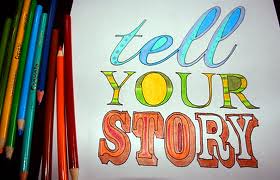After the year we’ve just been through, most people have realized the importance of connection. Your nonprofit organization also needs to make connections with your donors. One of the best ways to do that is to share stories.
Donors want to hear your stories
I would guess you’re not using stories as much as you should. That’s a mistake because people respond better to stories than a bunch of facts and statistics. Stories bring the work you do to life by using everyday language to create a scene.
You may be reluctant to use stories because it’s more work for your organization, but that shouldn’t stop you. The summer is a good time to come up with some new stories.
Your stories need to be relevant
I don’t need to tell you the world has changed since March 2020. Your stories need to take the current climate into account. That’s why you new need ones. This year is different than last year, but not the same as 2019. Let your donors know how the pandemic (which is still with us, by the way), the economy, and systemic racism are impacting your clients/community right now.
Create a culture of storytelling
If you create a storytelling culture in your organization, you can make storytelling the norm instead of the exception.
Work with your program staff to create stories that will help you connect with your donors. Everyone needs to understand how important this is. Share stories at staff meetings and/or set up regular meetings with program staff to gather stories. Do this virtually if you’re not in the office.
How To Create A Culture of Storytelling in Your Nonprofit
When you put together a story, ask.
- Why is this important?
- Who is affected?
- Why would your donors be interested in this story?
- Are you using clear, everyday language (no jargon) to make sure your donors understand your story?
- How are your donors helping you make a difference or How can your donors help you make a difference?
Client or program recipient stories are best. Remember, donors want to hear how they’re helping you make a difference for your clients/community.
Another way to find stories is to put a Share Your Story page on your website. This could be a good way to get some current, relevant stories.
4 INSPIRATIONAL “SHARE YOUR STORY” PAGES THAT WILL KNOCK YOUR SOCKS OFF
Language is important
It’s time to stop using jargon such as at-risk and underserved. These terms undermine your clients/community. These aren’t terms your donors use, anyway. Use language they’ll understand.
You also don’t want to give the impression that your organization is coming in to save someone. This is especially important if the majority of your staff and donors are white, but your clients are people of color. This is known as white savior complex. Most likely that’s not intentional on your part, but watching how you tell your stories will help you avoid that. Be respectful of your clients/community.
4 Resources to Help Shift the Narrative for Equity in Nonprofit Communications
Your stories aren’t about your organization
Remember, your stories aren’t about your organization. Your organization may have had to make a lot of changes to do some of the work you do, but that’s not your story. Your story is why this is important for the people/community you work with.
Maybe you had to change the way you run your food pantry, but what’s most important is that people in your community continue to have access to healthy food.
Make your stories personal
Tell a story of one (person or family). Use people’s names to make your stories more personal. I realize you might run into confidentiality issues, but you can change names to protect someone’s privacy. You could also do a composite story, but don’t make up anything.
Fundraising with Names Have Been Changed Disclaimers
Use different stories for different types of communication
Create a story bank to help you organize all your stories. You want to use stories as much as possible. Use them in your appeals, thank you letters, newsletters, updates, annual reports, website, blog, and other types of social media.
While you can come up with some core stories, they’ll be slightly different depending on the type of communication.
In a fundraising appeal, you want to highlight a problem or need. Let’s say you run a tutoring program. Here you can tell a story about James, a high school student who didn’t fare well with remote learning and is behind in his grade level. Because of this, he could benefit from a tutor.
In your thank you letter, you can let your donors know that because of their generous gift, James will be able to start tutoring sessions with Mark, a local college student.
Then in your newsletter, annual report, or update, you can tell a success story about how James is doing much better in school after starting weekly tutoring sessions with Mark.
Make connections with your donors by sharing stories. Read on below for more information about creating stories. In my next post, I’ll write about sharing visual stories.
Making a Great Story into a Powerful Fundraising Story
How to Write an Impact Story that Moves Hearts & Minds

[…] Make Connections With Your Donors by Sharing Stories […]
LikeLike
[…] Make Connections With Your Donors by Sharing Stories […]
LikeLike
[…] new donors for your nonprofit. Perhaps you rely on word of mouth and encourage existing supporters to share their stories and bring their peers into the fold. Or, perhaps you use direct mail to send information about upcoming events in your local […]
LikeLike
[…] Make Connections With Your Donors by Sharing Stories […]
LikeLike
[…] specific, relatable stories about the community you serve and the problems they […]
LikeLike
[…] Make Connections With Your Donors by Sharing Stories […]
LikeLike